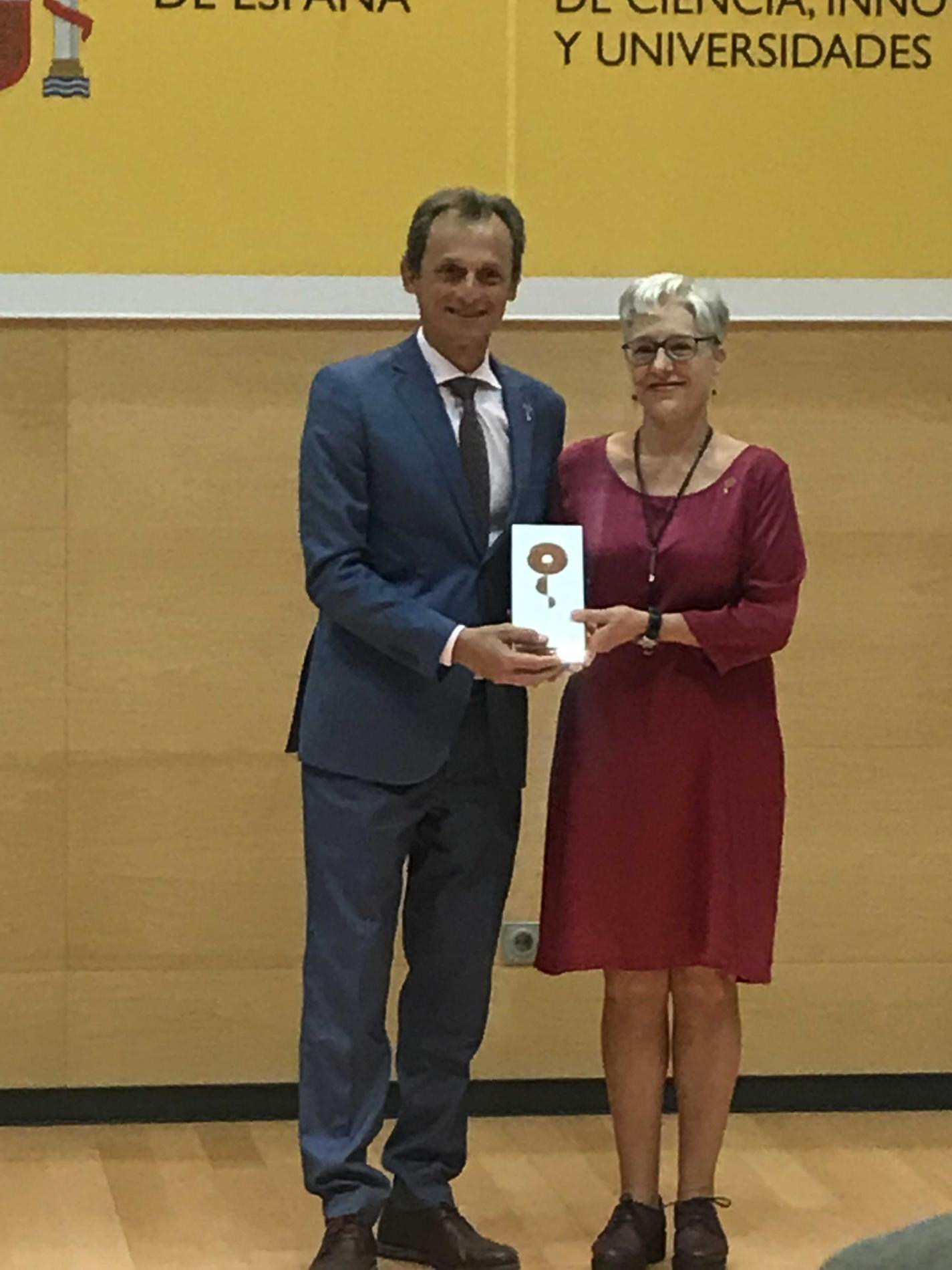The Institute of Astrophysics of Andalusia (IAA-CSIC) receives the distinction Center of Excellence Severo Ochoa
The Minister of Science, Innovation and Universities in operation, Pedro Duque, presides today on Monday, September 9, the official ceremony of delivery of the Severo Ochoa badges to the most recent winners, among which is the Institute of Astrophysics of Andalusia (IAA- CSIC). Isabel Márquez, deputy director of the IAA and scientific director of the Severo Ochoa project, receives the distinction, which recognizes the centers that carry out cutting-edge science basic research and are among the best in the world in their area. The IAA is the only Andalusian center with this seal of excellence of a total of twenty-five currently granted.
The Severo Ochoa centers have been selected for their trajectory in the last five years and their strategic programs, after a rigorous evaluation by an international committee made up of researchers of the highest level and recognized prestige in their fields. This guarantees the quality, the level of excellence and the impact of the research carried out by the selected centers. The Institute of Astrophysics of Andalusia (IAA-CSIC) is the only Andalusian center with the Severo Ochoa distinction.

A SOLID PATH OF MORE THAN FOUR DECADES
Center of international reference in astrophysics, the IAA is one of the biggest centers of the Spanish National Research Council (CSIC). For its scientific production, it is the first center of the CSIC and the second in Spain in the area of astrophysics and space science. "Few are the centers that cover so many fields of space science, and also work with multi-range observations both from Earth and from space and participate in technological developments at the highest level - says Antxon Alberdi, director of the IAA-CSIC- This breadth of knowledge and techniques, and the interconnection between them, allows us to lead large international research projects of the cosmos. "
The research lines of the Institute of Astrophysics of Andalusia cover each and every one of the main areas of modern astrophysics, from quantum gravity to the Solar System, through the evolution of galaxies, cosmology, the structure of our Galaxy and the extrasolar planets. The center manages the Sierra Nevada Observatory (Granada) and co-manages scientifically the Observatorio de Calar Alto (CAHA, Almería).
The IAA and CAHA have led the CALIFA project, the most extensive three-dimensional spectroscopic survey done to date, of more than 500 galaxies of different morphologies, which constitutes a pioneering project and a legacy for the international community.
The IAA leads technological developments for space, including instruments for the Solar Orbiter (ESA), Mars Express (ESA) or BepiColombo (ESA) missions, which will study respectively the Sun, Mars and Mercury. The center stood out for its successful participation in the Rosetta mission, and works on challenging future projects, such as the JUICE mission, which will explore Jupiter and its larger moons, or PLATO, which will characterize planets similar to ours around other stars.
In addition, the Institute of Astrophysics of Andalusia has developed state-of-the-art instrumentation for ground-based telescopes, including Calar Alto (CARMENES and PANIC instruments) or Roque de los Muchachos (MEGARA instrument for the Gran Telescopio Canarias).
In addition, the IAA is involved in the development of the most ambitious international research infrastructures in global astrophysics, which will make unique contributions to the frontiers of knowledge. The IAA leads the scientific and technological participation of Spain in the Square Kilometer Array (SKA), the largest radio telescope in the world. Participates in the development of the European Solar Telescope (EST) which will be the largest built in Europe, as well as in two of the instruments of the Extremely Large Telescope (ELT / ESO): the MOSAIC multi-object spectrograph and the high-resolution spectrograph HIRES.
"Based on a solid and transversal scientific strategy, our challenge is to transform the IAA into one of the institutes of reference in Europe and to develop its research and structure to reach a privileged position for the exploitation of the next generation of advanced and innovative experiments", says Isabel Márquez, scientific director of the Severo Ochoa project of the IAA.
The Institute of Astrophysics of Andalusia is part of the Severo Ochoa - María de Maeztu alliance (SOMMa), whose mission is the defense and promotion of excellence in Spanish research, as well as the enhancement of its economic and social impact, both national level as international.
Instituto de Astrofísica de Andalucía (IAA-CSIC)
Unidad de Divulgación y Comunicación
Silbia López de Lacalle - sll[arroba]iaa.es - 958230676
https://www.iaa.csic.es
https://divulgacion.iaa.csic.es

